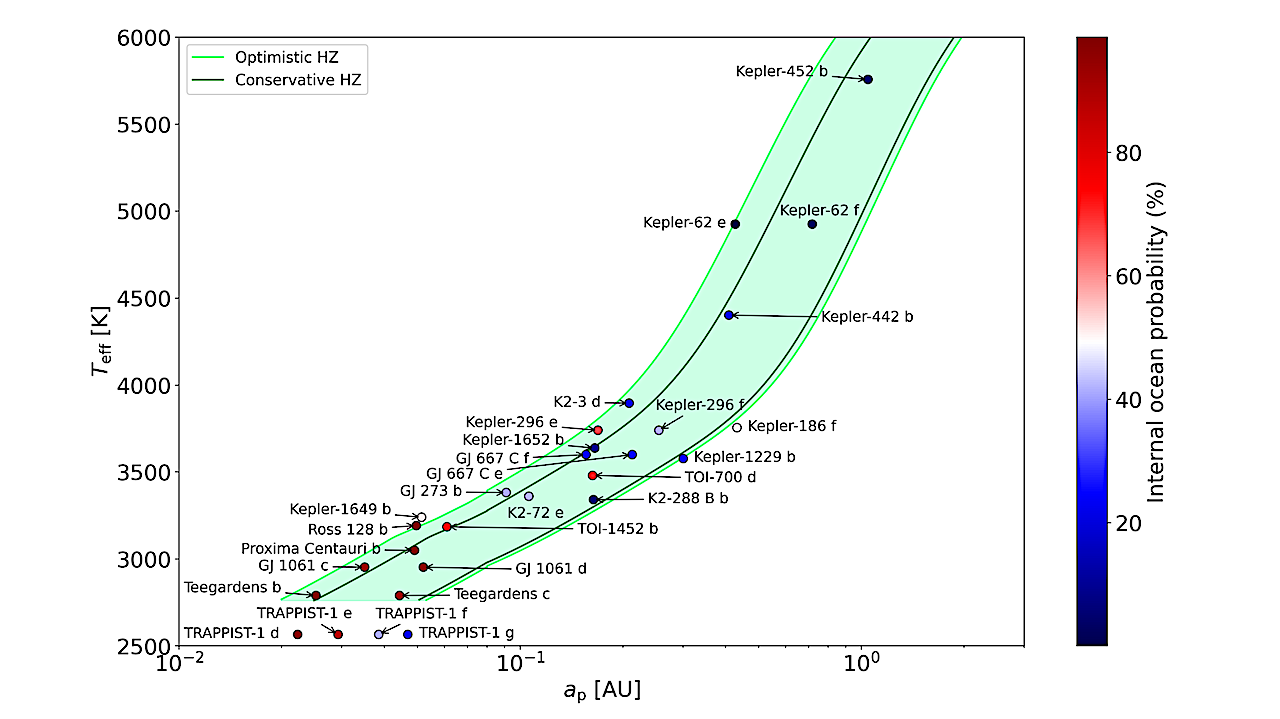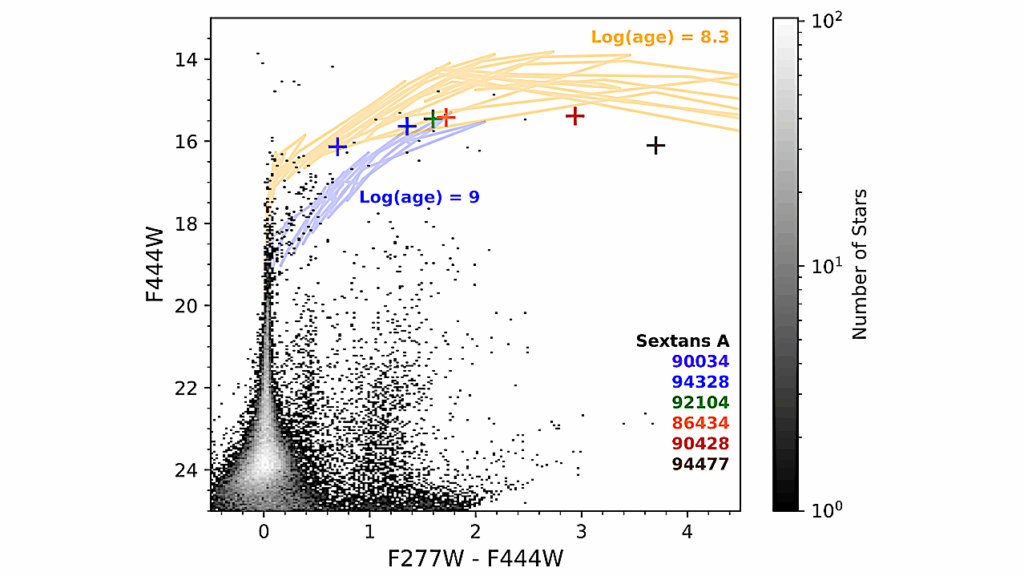Water Content Of Rocky Exoplanets In The Habitable Zone

In this study we investigated the interiors of rocky exoplanets in order to identify those that may have large quantities of water.
We modelled the interiors of 28 rocky exoplanets, assuming four different layers – an iron core, a rock mantle, a high-pressure ice layer, and a surface ice/water layer. Due to observational bias, our study is limited to habitable zone exoplanets.
We determined a range of possible water mass fractions for each planet consistent with the modelled planetary structures. We calculated the tidal heating experienced by these exoplanets through gravitational interactions with their host stars, assuming a temperature- and composition dependent Maxwell viscoelastic rheology. Assuming radioactive elemental abundances observed in Solar System meteorites, we also calculated the radiogenic heat flux inside the planets. We estimated the probability of the presence of a thick ocean layer in these planets, taking into account the effect of both tidal and radiogenic heating.
Our results showed that Proxima Centauri b, Ross 128 b, Teegarden’s b and c, GJ 1061 c and d, and TRAPPIST-1 e may have an extended liquid water reservoir. Furthermore, extremely high H2O-content of the exoplanets Kepler-62 f, Kepler-1652 b, Kepler-452 b, and Kepler-442 b suggests that these planets may maintain a water vapour atmosphere and may in fact be examples of larger ocean worlds. Upon the discovery of new rocky exoplanets beyond the habitable zone, our study can be extended to icy worlds.
Ádám Boldog, Vera Dobos, László L. Kiss, Marijn van der Perk, Amy C. Barr
Comments: 13 pages, 4 figures, 5 tables; accepted in Astronomy and Astrophysics
Subjects: Earth and Planetary Astrophysics (astro-ph.EP)
Cite as: arXiv:2312.01893 [astro-ph.EP] (or arXiv:2312.01893v1 [astro-ph.EP] for this version)
Submission history
From: Ádám Boldog
[v1] Mon, 4 Dec 2023 13:47:14 UTC (2,476 KB)
https://arxiv.org/abs/2312.01893
Astrobiology, Astrochemistry








